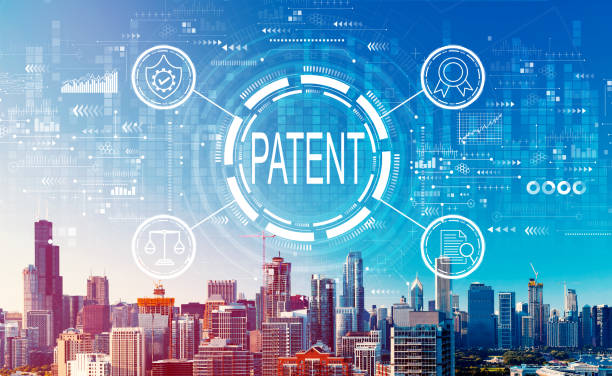Investor IP due diligence refers to the process of investors examining a company’s intellectual property (IP), before they invest in it. The ownership of IP is an important aspect of this process. It helps investors determine if the company owns its IP clearly and if there are potential issues or future risks.
Investors review the IP portfolio of the company, including patents, trademarks, and copyrights. They also look at any proprietary technology, know-how, or other intellectual property. Investors also check the contracts and agreements of the company to make sure that third-party ownership or licensing agreements do not affect the ability of the company to use or monetize its IP.
How is patent ownership determined?

The laws and regulations in the country or area where the patent was granted determine the ownership of the patent. The initial owner of the patent is usually the inventor or inventors. However, ownership can be assigned or transferred to another party through various methods, such as a license or sale.
The inventor or inventors are usually the first owners of the patent. There are exceptions to the rule. For example, if an invention was created as part of a contract or by a group of inventors.
In some countries, like the United States of America, it is important to know that patent rights may be awarded to the person or entity who files the first patent application, regardless of the inventor. It is therefore important for inventors who wish to establish ownership rights to submit a patent application immediately.
Investor Due Diligence on Ownership
Investors will typically seek answers to the following questions regarding patent ownership:
1. Does the Company Own Each and Every Patent Asset?
A patent is a document that grants someone the exclusive right to protect and exploit their invention, including both new ideas and existing technologies. Patents can be invaluable assets for businesses across many industries, with the potential of becoming one of your most important business investments.
Investment protection and company value creation are important objectives in today’s business climate, where companies are increasingly using intangible assets to gain an edge and boost profitability. It not only protects your investment, but it can also add significant value to the enterprise.
A patent portfolio is an integral component of investment research. Having access to comprehensive and up-to-date data on competitors’ patent portfolios is critical for making informed decisions, and avoiding wasted spending on high-risk patents that may not even be profitable.
To guarantee you get all pertinent patent data, hiring an IP consultant who possesses expert knowledge is your best bet. These specialists possess a deep comprehension of how to utilize and manage your company’s intellectual property effectively. Furthermore, these specialists possess expertise in using effective tools and techniques designed to maximize the value from your patent portfolio over time.
Another essential element of a successful patent portfolio is the capacity to accurately appraise the value of both pending and issued patents in light of industry trends and events. Doing this periodically can save significant budget in the long run by eliminating patents that are not worth their current prices.
To achieve this, the IFI Names Service is utilized to standardize patent names across databases and languages, then harmonize them with current corporate entity names. This step is especially critical if there has been a recent company merger or spin-off as the classification of these entities must be accurate in order to accurately determine who owns a given patent asset – usually, this will be the parent company.

2. Are Any of the Patents Encumbered?
Patents are a type of intellectual property (IP) that grants an inventor exclusive rights to an invention for a specified period. On average, they last 20 years from when it was granted. The most common types of patents include utility, plant, and design patents.
No matter the type of patent, companies must pay annual maintenance fees in order to keep their patent valid. These fees are calculated based on how many years have passed since issuance.
For instance, if a company owns a utility patent that has been active for twenty years, it must pay maintenance fees every six months to keep the patent valid. Without payment of these fees, however, the patent will expire sooner and cannot be renewed.
Patent protection
It is essential to comprehend that patents grant inventors the exclusive right to make, use or sell their inventions. They also have the legal capacity to sue for infringement of the invention.
A patent owner may file a lawsuit seeking monetary damages for past infringement and an accounting of the company’s profits or losses. However, before filing suit it is important for them to take specific steps to safeguard their rights and increase the chances of success.
This includes taking an aggressive approach to monetizing their SEPs and guaranteeing they act with good faith during pre-suit negotiations.
Additionally, patent owners should be aware that there are various ways they can free their FRAND-encumbered patents. One option is simply assigning the rights to a new holder.
Another way to free a patent is through licensing it. Unfortunately, this can be an uphill battle for both parties and may often result in unfavorable outcomes for the business.
Companies may choose to impose limitations on a licensee’s ability to enforce or further transfer its patent rights. This can be done through various methods, such as through contracts or other forms of legal authority.
Finally, it is the government’s role to strike a balance between patent owners and potential licensees of SEPs. For example, the United States has developed a policy statement outlining remedies available for SEPs subject to FRAND commitments; this document was produced jointly by the USPTO and the Department of Justice.
3. Does the Company Own Inventions Created by Employees?
Unless a written contract exists defining ownership of inventions, certain default rules apply. Patents and copyrights are presumed to belong to their creator; trade secrets, trademarks, and other forms of intellectual property may be subject to agreements between parties.
Many companies have an invention assignment agreement that gives the employer certain rights to inventions created during employment. The employee typically needs to disclose any inventions, assign ownership of these rights to their employer and assist in obtaining patents on any such creations.
However, an invention assignment agreement will not apply to inventions developed solely by an employee without using employer equipment, supplies, facilities or trade secret information; or if the invention does not relate directly to the company’s current business operations or fall outside their scope of work.
One exception occurs when an employee was hired specifically to invent something or solve a particular problem and their employer intended for it to be part of their invention or changed their duties to include innovation. In such cases, courts may consider the invention made “as a consequence of their employment” and thus belongs to the employer.
In many jurisdictions including the United States there is a concept of law called “work for hire” which applies to inventions that are created by employees in the course of their employment. In many jurisdictions, including the United States, there is a legal concept called “work-for-hire” that applies to inventions created within the scope of an employee’s employment.
It’s important to note that this is not a universal law. There can be variations or exceptions based on various factors. Certain jurisdictions grant employees certain rights for inventions created while employed. Employment contracts, collective bargaining agreement, or agreements between employer and employee can provide additional clarity regarding ownership of inventions.
Under UK Patents Law, employees who invent things for their employer are generally entitled to reasonable remuneration based on the profit made from the invention and their contribution. In certain circumstances, a clause allows extra payments in respect of inventions considered of outstanding benefit to employers.
Another factor to consider is that the location and date of conception do not play a significant role in deciding who owns an invention – courts in Oregon and Massachusetts have held that these factors are secondary and do not determine ownership.

4. Does the Company Own Inventions From Founders?
Generally, the person who invented an invention owns the rights to that invention. However, there are some exceptions to this rule.
For instance, the company may own a patent created by an employee while employed or as part of a work-for-hire project.
Employees in regular employment are expected to report inventions to their managers. In certain states, this is even a legal requirement.
There are a few common-law guidelines that entrepreneurs may find helpful. One such principle is the “shop right doctrine,” which states that employers can obtain a no-cost license to utilize an employee’s invention for business purposes.
Another is the “hired to invent” rule, which states that if an employee is hired specifically with the intention of creating an invention, it will belong to the employer. Typically, this can be accomplished by having them sign a written IP assignment agreement before the startup launches.
This is an effective way to guarantee that the innovation has real value when it hits the market. Additionally, it demonstrates to potential investors that your company has taken necessary measures to protect IP and has qualified personnel available to complete tasks efficiently.
Finally, it’s wise to examine what the inventor did regarding patenting their innovation. If they did this and have a patent, then you can bet they will have more success taking it to market than someone without such protection.
In general, the most significant aspect of an invention is that it has real value. This could take the form of either a product or service. Determining this worth is the initial step in commercializing an invention and can lay the groundwork for long-term growth and success. After that, you must decide how best to realize your objectives.
Why is patent ownership Due Diligence Important?
Patent ownership due diligence is important for several reasons:
1. Avoiding infringement
Conducting due diligence on patent ownership helps to ensure that patents used or acquired don’t infringe on the rights of others. This can help to avoid costly legal battles and harm the company’s reputation.
2. Ensuring Validity
Verifying ownership can ensure that patents are valid and enforceable. This will help the company avoid investing or using invalid patents or those that are not worth the investment.
3. Protecting assets
Due diligence is important to protect assets. Patents are valuable assets and ensuring that the company owns and controls these assets can help it maintain control. It can protect the intellectual property of the company and help prevent ownership disputes.

3. Enhancing value
A thorough process of due diligence can uncover potential risks and opportunities associated with patents which can increase the value of the entire company.
Summary
Patent ownership due diligence is essential for protecting the intellectual property of a company, avoiding infringements, ensuring validity, and increasing the value of a company.
By conducting a thorough review of the company’s IP ownership, investors can gain a better understanding of the value of the company’s IP assets and the potential risks and challenges that could impact the company’s ability to leverage its IP in the future.
